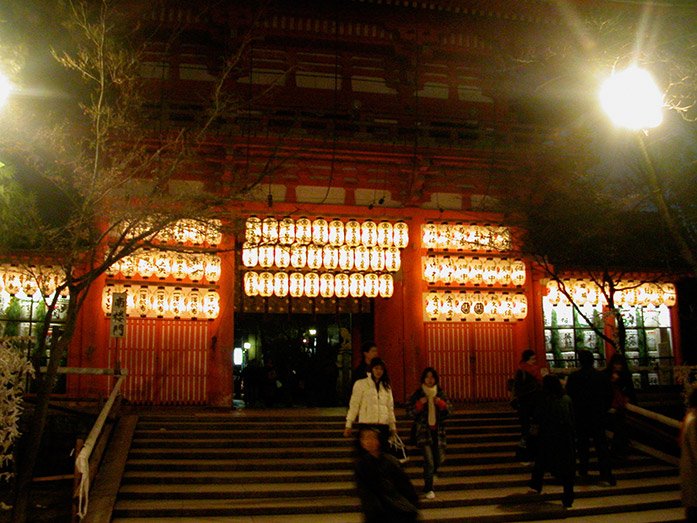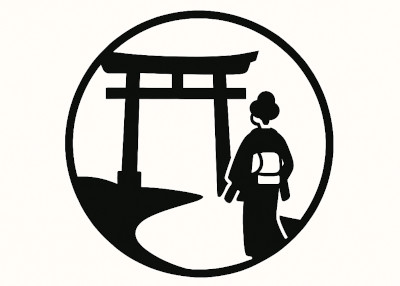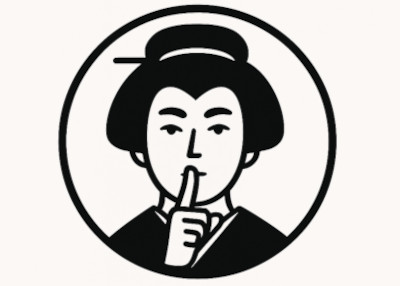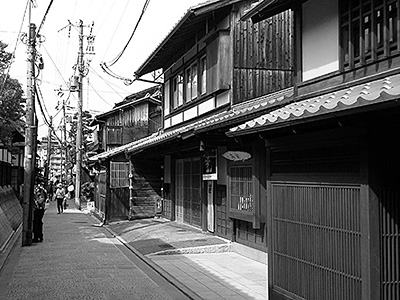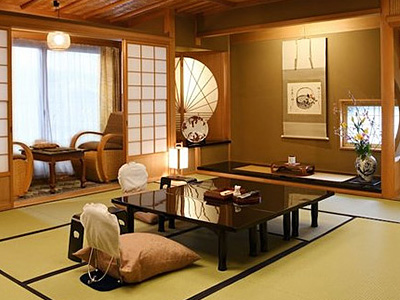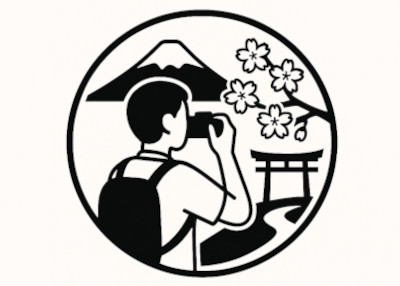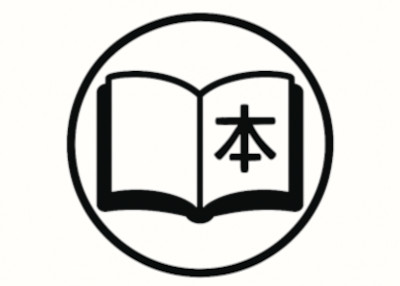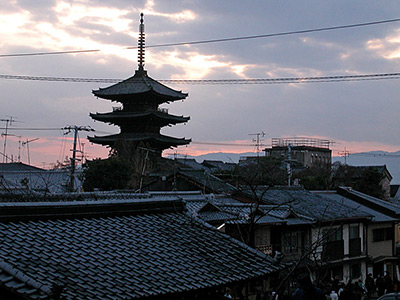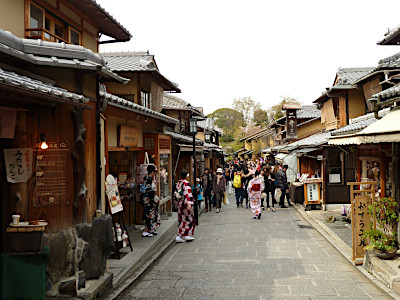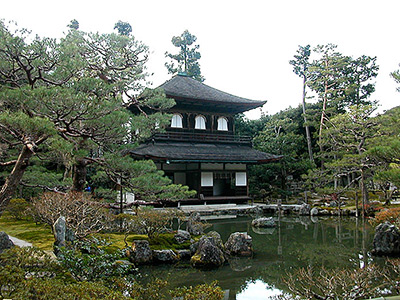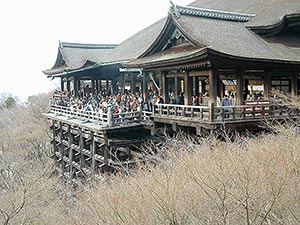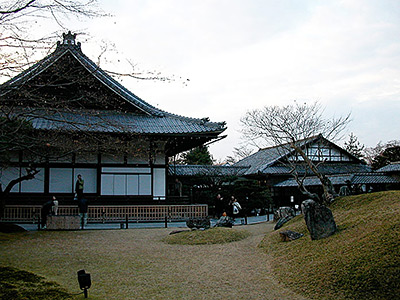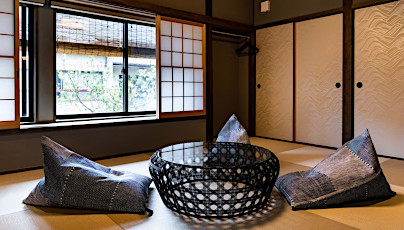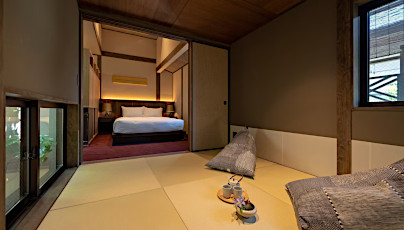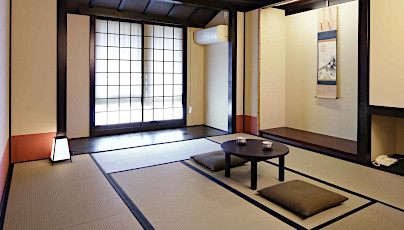Yasaka Shrine in Kyoto
This post can contain affiliate links, which means that we may receive a small commission if you make a purchase using these links.
Facts & Figures
The famous Yasaka Shrine, also known as Gion Shrine or Yasaka-jinja, is one of the most popular Shinto Shrines in Kyoto. The Yasaka Shrine complex is home to the guardian deity of the Gion district and contains many buildings like the Main Hall, dance stage, impressive gates and much more.
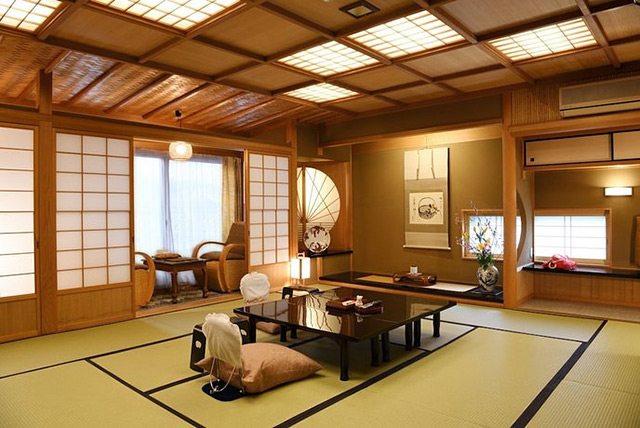 Experience the Ultimate Japanese Hospitality at a Kyoto Ryokan.
Experience the Ultimate Japanese Hospitality at a Kyoto Ryokan.
Find Your Perfect Ryokan Now >
Yasaka-jinja became the headquarters of over 2000 sub-shrines allover Japan with the same name and Susanoo-no-Mikoto shrines. Every evening hundreds of lanterns (sponsored by local businesses) get lit and create a unique atmosphere. It is my must-see recommendation for you. The largest summer festival in Kyoto, called Gion Matsuri, is also hosted at Yasaka Shrine. People visit the shrine to pray for love, successful weddings, good health and well-being of newborn babies. Right next to the shrine is the Maruyama Park located. It is one of the most popular cherry blossom spots (hanami) in Kyoto and therefore can get really crowded.
- Kyoto Yasaka Shrine:
- Open - whole day, 365 days a year
- Admission fee - free
History
The origin of Yasaka Shrine is dating back to the year 656. The shrine is dedicated to some famous figures in Japanese mythology like Susanoo-no-Mikoto (brother of Amaterasu), Kushinadahime-Mikoto (the princess of Susanoo-no-mikoto), Yahashirano-mikogami (one of Susanoo-no-mikoto's eight children) and the kami against misfortunes and disasters. Most of the exisiting buildings at the shrine complex are from a reconstruction project in 1654 under the order of shogun Tokugawa Ietsuna (1641 - 1680). During the years of 1871 till 1946 it got the official status of an government supported shrine (Kanpei-taisha).
Location

Yasaka Shrine is located in the Gion District at the east end of Shijo-dori (Fourth Avenue) in Kyoto.
Address: 625 Gion-machi Kitagawa, Higashiyama-ku, 605-0073 Kyoto
How to get to Yasaka Shrine?
- 20min from Kyoto Station to Gion bus stop by bus nr. 100 or 206
Sightseeing spots
Top:
Main Hall (Honden) - The Main Hall is designated as an Important Cultural Property of Japan. It covers an area of 1320 square meters. The height of the building is 15m and its unique roof construction style is called Gion-zukuri. The roof itself stretches over the main hall and front shrine. The hall was reconstructed in 1654 by the order of shogun Tokugawa Ietsuna (1641 - 1680).
Buden Hall (Kaguraden) - The square shaped open stage is decorated with hundreds of paper lanterns. It is used for dance performances, dedication and weddings ceremonies. During the Setsubun Matsuri in February you are able to see performances of maikos and geishas on stage.
Nishi-romon Gate (Yashamon Gate) - One of the main entrance gates for the Yasaka Shrine is a landmark in Kyotos Higashiyama district. Check out the fierce looking wooden samurai warrior statues (Zuijin) on the right and left side of the West entrance. The last major makeover of the gate happened in the year 2007, when it was repainted with vermilion lacquer and its roof tiles got modernized. Nishi-romon Gate received also the status of an Important National Cultural Property.
Minami-romon Gate - It is the beautiful South Gate of Yasaka Shrine and the official main entrance.
Ota Shrine - Here are enshrined Sarutahiko no Kami (patron kami of martial arts) and his wife Ame no Uzume no Mikoto (patron kami of performing arts).
Utsukushii Gozen Shrine - This small sub-shrine is dedicated to the 3 goddesses of beauty (Tagitsu-hime-no-kami, Tagiri-hime-no-kami, Ichikishima-hime-no-mikoto) and people come here the pray for a beautiful body and mind. The shrine is very popular destination for young woman, which includes geisha and maiko.
Ekijin (Eki-jinja) - It is a small sub-shrine of Yasaka. According to a Japanese legend the Somin-shorai deity is enshrined here who protects people from epidemic plagues.
Ebisu-sha Shrine - It is popular to visit this place and pray for a successful business, because the god of good fortune (Ebisu) is enshrined here.
Festival & Events (dates can change without notice)
January
Hatsumode (1st)
People form large crowds at Yasaka for the first shrine visit of the new year.
It is a very old tradition and visitors take home a sacred flame to cook their first dish of the year. This whole procedure is called Okera-Mairi.
February
Setsubun (3rd)
One day before spring arrives (lunar calendar) the Setsubun is celebrated. Bean throwing (Mame maki) ceremonies are held at the shrine to get a good fortune for the year. Do not miss the bonfire on the evening.
April
Miyako Odori (1st - 31th)
The traditional annual spring dance of the Kyoto district Gion Kobu performed by Geiko and Maiko is a must-see on your Kyoto visit. Don't miss the most popular dances the Miyako Odori "Cherry Blossom Dances" or "Dances of the Old Capital" at the Gion Kobu Kaburenjo Theater (located close to Gion Corner).
May
Ochatsubo Dochu (1st)
The Ochatsubo Dochu or Traveling Tea Canisters festival dates back to the Edo Period. It represents the practice of showing the new tea harvest from Uji to the ruling shogun in the old days. Now during the parade large ceramic containers with tea are carried by people wearing traditional costumes from Kenninji Temple to Yasaka Shrine.
Aoi Matsuri (15th)
The highlight of this festival is a large parade from Imperial Palace through Shimogamo Shrine to the Kamigamo Shrine. More than 500 people wearing aristocratic costumes from the Heian Period (794 - 1185). The Aoi Matsuri belongs with the Gion Matsuri and Jidai Matsuri to the three most famous festivals in Kyoto.
July
Gion Matsuri (whole month)
The month July is full of different events like the Yoiyama - Kyoto's Magical Night (locals in kimonos look at the giant Gion floats the day before the parade) or the famous Yamaboko Junko (float procession on the 17th of July).
October
Jidai Matsuri ("Festival of Ages") (22nd)
People celebrate with a large parade between Imperial Palace to Heian Shrine the anniversary of the foundation of Kyoto. App. 2000 participants wearing historical costumes from different time periods. Enjoy this great festival which last around 2 hours.
November
Shichi-Go-San (15th)
The well-being and growth of young children is celebrated at the shrine and in the rest of Japan.
Where to stay in Kyoto?
Book your Flight Tickets and Rental Car for your Japan trip
Day trips from Kyoto:
Travelers who viewed Kyoto Yasaka Shrine viewed also:
Top rated - Best Machiya Houses in Kyoto
THE MACHIYA Ebisuya, 192 Ebisuya-cho Shimogyo-ku, Kyoto 600-8062
This 3-star guesthouse got an excellent rating. All 30 individually furnished rooms offer free WiFi, air conditioning, bathrooms incl. toilets, fridges, 40-inch flat-screen TVs, and more. THE MACHIYA Ebisuya is located in central Kyoto.
View on Expedia.com
This 3-star guesthouse got an excellent rating. All 30 individually furnished rooms offer free WiFi, air conditioning, bathrooms incl. toilets, fridges, 40-inch flat-screen TVs, and more. THE MACHIYA Ebisuya is located in central Kyoto.
View on Expedia.com
The Machiya Kazahaya, 570-6 Kazahayacho, Shimogyo-ku, Kyoto, Kyoto, 600-8475
The Machiya Kazahaya offers for all guest rooms free WiFi, air conditioning, safes, bathrooms with toilets, refrigerators, and much more. Enjoy also the beautiful Japanese Garden. Guests gave this property the rating - Exceptional.
View on Expedia.com
The Machiya Kazahaya offers for all guest rooms free WiFi, air conditioning, safes, bathrooms with toilets, refrigerators, and much more. Enjoy also the beautiful Japanese Garden. Guests gave this property the rating - Exceptional.
View on Expedia.com
Kyomachiya Ryokan Sakura Urushitei, 425 Kichimonjicho, Shimogyo-ku, Kyoto, 600-8069
This beautiful 3-star guesthouse offers 32 rooms with free WiFi, air conditioning, bathrooms incl. showers and toilets, refrigerators, and much more. Enjoy also the relaxing indoor public bath (no minerals). Guests gave this property the rating - Wonderful.
View on Expedia.com
This beautiful 3-star guesthouse offers 32 rooms with free WiFi, air conditioning, bathrooms incl. showers and toilets, refrigerators, and much more. Enjoy also the relaxing indoor public bath (no minerals). Guests gave this property the rating - Wonderful.
View on Expedia.com

